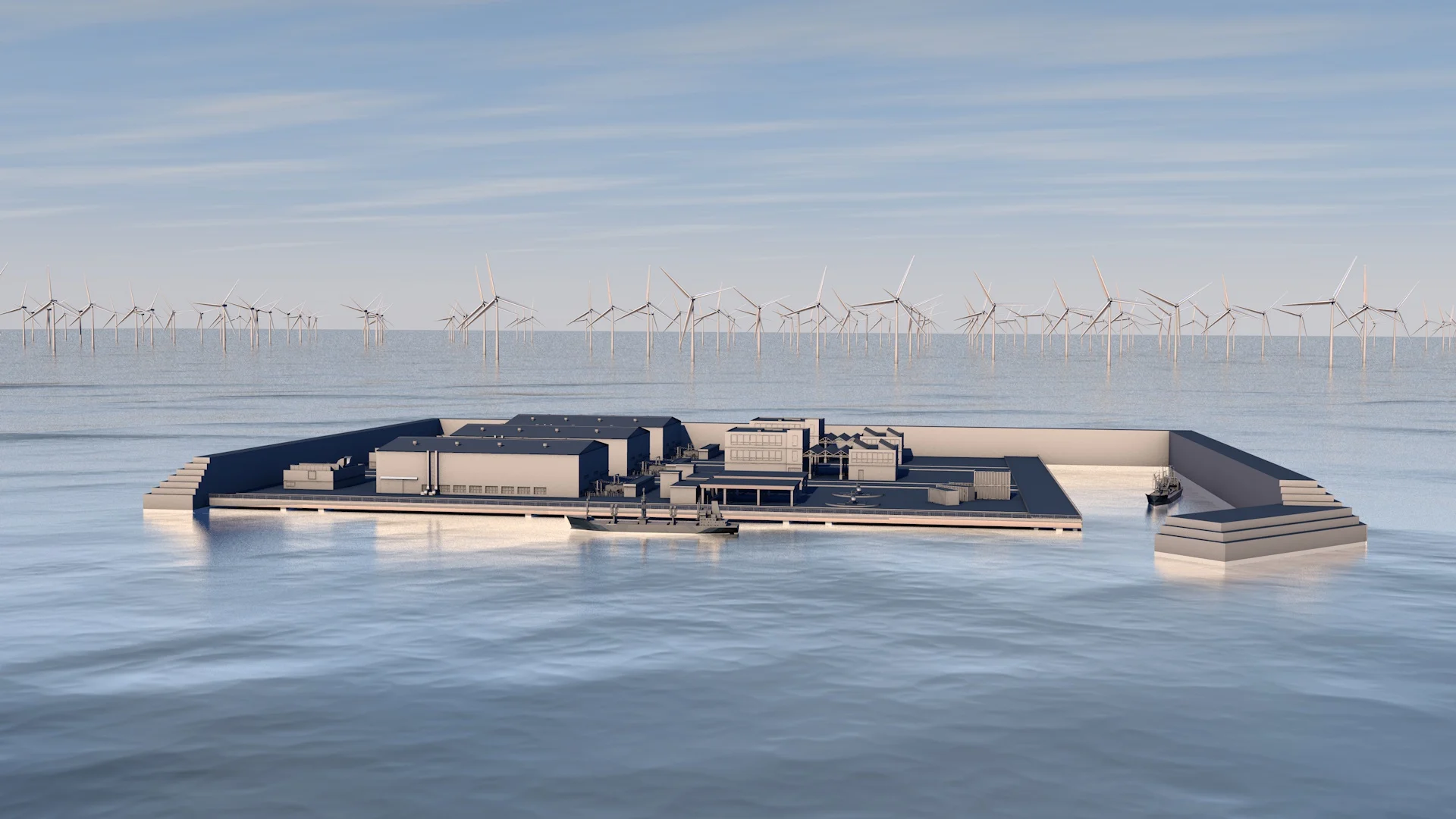
Denmark plans offshore "energy island" hub to power millions of homes
The island will serve as a hub for hundreds of offshore wind turbines, enough to power millions of homes.
Should you be planning a gigantic offshore wind farm, but are worried it’s too far from your land-based energy hubs, no problem — you can always just make your own island, at least if you’re Denmark.
The country recently announced it was going ahead with a man-made offshore energy hub — colloquially called an “energy island” in the press — that would be the nexus for at least 200 turbines, some 80 km off the coast of Denmark’s Jutland peninsula.
Covering an area of 120,000 square metres, around the size of 15 Canadian football fields, the island has a target completion date of 2033, and will cost 210 billion kroner (CA$43 billion) to build. It will house batteries for energy storage to cope with periods of excess demand, and the Danish Energy Agency says its “long-term ambition” would be to also use the renewable energy generated to produce green hydrogen fuel, which can be transported to the mainland to power vehicles and industry.

Image courtesy: Danish Energy Agency
As for the island’s actual generation output, that will be enormous as well, around 10GW. The Danish Energy Agency says that, once fully up and running, the hub will send enough energy to the mainland to power as many as 10 million homes, far more than Denmark’s domestic needs. The Danish government says it intends to export power to other European countries to help meet the European Union’s ambitions for renewable energy.
“The EU has set a goal to achieve climate neutrality by 2050 and the [European Commission] has set a target of 300 GW offshore wind energy in order to attain this goal,” Denmark’s climate and energy minister, Dan Jørgensen, said in a release from the Danish Energy Agency. “By constructing the world’s first energy hub with a potential capacity of 10 GW, Denmark significantly contributes to this ambitious target. Not only by dramatically expanding renewable energy production, but also by supplying our European neighbors with an abundance of renewable energy.”
Denmark is something of a poster-child for renewable energy. The country derives more than half of its energy from renewable sources, with as much as 40 per cent coming from wind energy.
At the same time as it’s ramping up renewables, Denmark, the EU’s largest oil producer, is gradually winding down its oil and gas operations. Last year, lawmakers struck a deal to cancel future oil and gas exploration licenses in the North Sea, leaving around the equivalent of around 150 million barrels of oil untapped. It plans to scale down production altogether by 2050.
“We hope this can inspire others,” Jørgensen told World Oil Magazine in December at the time the deal was announced. “We’re the first country with a meaningful production to take such a step. The idea is that others will look at us and say, ‘if Denmark can do it, so can we.”’












